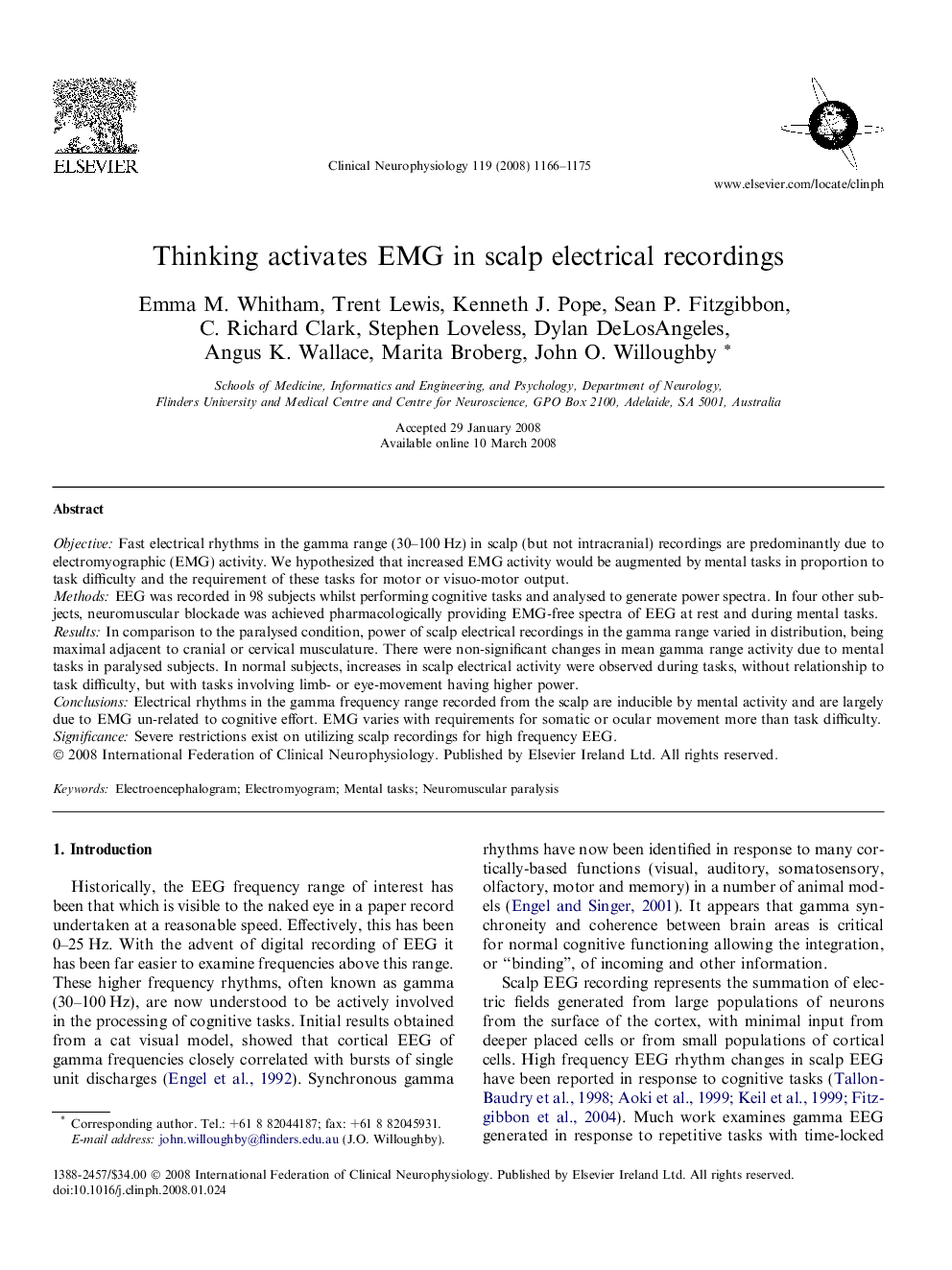| Article ID | Journal | Published Year | Pages | File Type |
|---|---|---|---|---|
| 3047606 | Clinical Neurophysiology | 2008 | 10 Pages |
ObjectiveFast electrical rhythms in the gamma range (30–100 Hz) in scalp (but not intracranial) recordings are predominantly due to electromyographic (EMG) activity. We hypothesized that increased EMG activity would be augmented by mental tasks in proportion to task difficulty and the requirement of these tasks for motor or visuo-motor output.MethodsEEG was recorded in 98 subjects whilst performing cognitive tasks and analysed to generate power spectra. In four other subjects, neuromuscular blockade was achieved pharmacologically providing EMG-free spectra of EEG at rest and during mental tasks.ResultsIn comparison to the paralysed condition, power of scalp electrical recordings in the gamma range varied in distribution, being maximal adjacent to cranial or cervical musculature. There were non-significant changes in mean gamma range activity due to mental tasks in paralysed subjects. In normal subjects, increases in scalp electrical activity were observed during tasks, without relationship to task difficulty, but with tasks involving limb- or eye-movement having higher power.ConclusionsElectrical rhythms in the gamma frequency range recorded from the scalp are inducible by mental activity and are largely due to EMG un-related to cognitive effort. EMG varies with requirements for somatic or ocular movement more than task difficulty.SignificanceSevere restrictions exist on utilizing scalp recordings for high frequency EEG.
